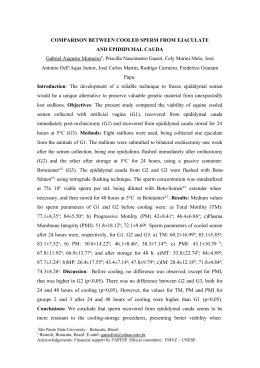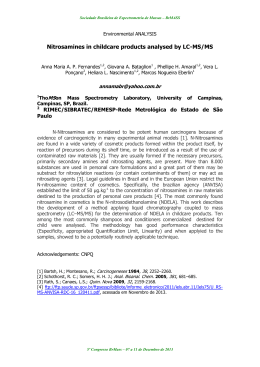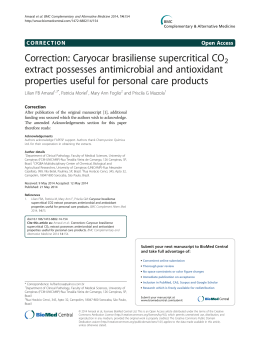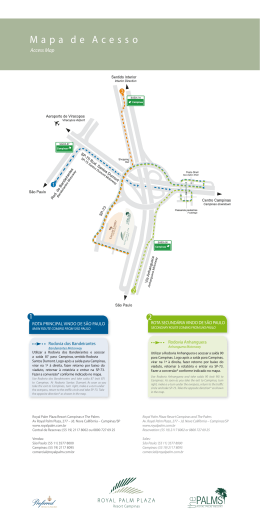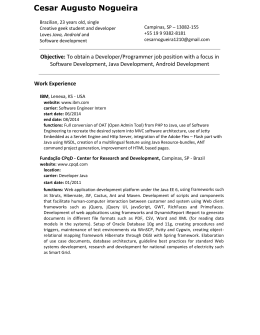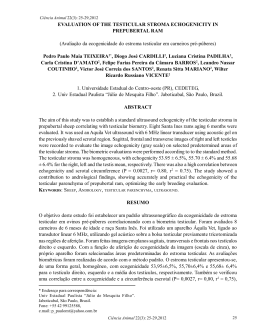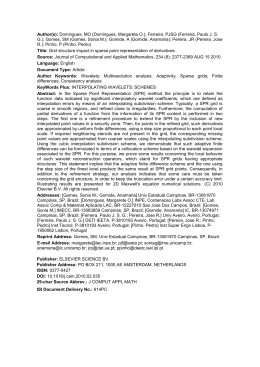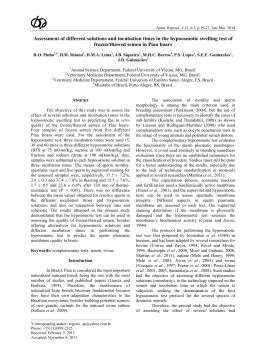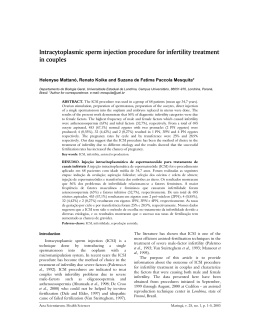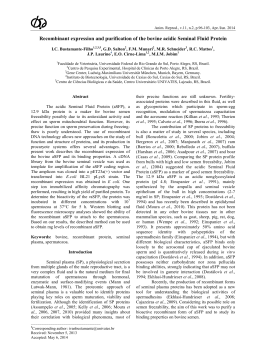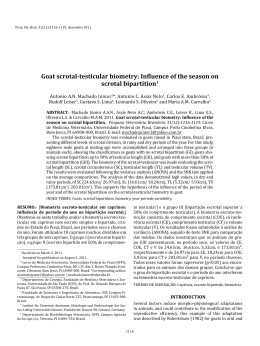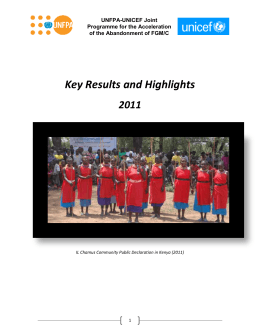Urological Survey International Braz J Urol Official Journal of the Brazilian Society of Urology Vol. 28 (4): 363-386, July - August, 2002 UROLOGICAL SURVEY FRANCISCO J.B. SAMPAIO Urogenital Research Unit State University of Rio de Janeiro (UERJ), Brazil EDITORIAL COMITTEE ATHANASE BILLIS MARGARET S. PEARLE State University of Campinas Campinas, SP, Brazil University of Texas Southwestern Dallas, Texas, USA ANDREAS BÖHLE STEVEN P. PETROU Mayo Medical School Jacksonville, Florida, USA Medical University of Luebeck Luebeck, Germany ADILSON PRANDO W. CASTANEDA Vera Cruz Hospital Campinas, SP, Brazil Louisiana State University New Orleans, Louisiana, USA E. ALEXSANDRO DA SILVA SANDRO C. ESTEVES Androfert Campinas, SP, Brazil Urogenital Research Unit, UERJ Rio de Janeiro, RJ, Brazil BARRY A. KOGAN ARNULF STENZL Albany Medical College Albany, New York, USA University of Tuebingen Tuebingen, Germany MAX MAIZELS J. STUART WOLF JR. Children’s Memorial Hospital Chicago, Illinois, USA University of Michigan Ann Arbor, Michigan, USA 363 Urological Survey Genital swellings are initiated, but outgrowth is not maintained. In the absence of Shh signaling, Fgf8, Bmp2, Bmp4, Fgf10, and Wnt5a are downregulated, and apoptosis is enhanced in the genitalia. These results identify the urethral epithelium as a signaling center of the genital tubercle, and demonstrate that Shh from the urethral epithelium is required for outgrowth, patterning, and cell survival in the developing external genitalia. Editorial Comment The literature concerning external genital development is controversial, owing largely to inconsistent descriptions of genital development. Development of penile urethra has been a particular area of controversy, with such fundamental issues as the embryonic origin of the distal urethral plate and morphogenesis of the tubular urethra remaining unclear. Despite external genital defects are among the most common congenital anomalies, the molecular mechanisms controlling early stages of external genitalia development is not well understood. Recent findings showed that the spongy urethra presents regional differences regarding to extracellular matrix molecules (1), and this could have a key role during urethral development because a normal interaction between epithelial and mesenchymal tissues in the tubercle is required for normal genital development. The authors have provided the most accurate and comprehensive study of the embryology of the mouse external genitalia. The authors did not detect, at any stage studied, an ectodermal ingrowth from the apex of the mouse genital tubercle. This contrasts with previous reports that the distal urethra forms by apical ectodermal invagination. However, the most impressing finding in the present paper is the superb description of the key role of Shh genes in the external genital development. Furthermore, these genes regulate the expression of several cytokines (i.e., FGF family). Another strong point in the present paper is the clear evidence showed by the authors that the urethral epithelium, but not genital mesenchyme, has polarizing activity. The authors’ results clearly identified the urethral epithelium as a signaling region in the genital tubercle, implicated Shh genes as the key urethral signal, and showed that Shh is essential for external development. Reference 1. Da Silva EA, Sampaio FJB, Ortiz V, Cardoso LE: Regional differences in the extracellular matrix of the human spongy urethra as evidenced by the composition of glycosaminoglycans. J Urol. 2002; 167:2183-7 Dr. E. Alexsandro da Silva Urogenital Research Unit State University of Rio de Janeiro Rio de Janeiro, RJ, Brazil HUMAN REPRODUCTION _______________________________________________________ Predictive value of testicular histology in secretory azoospermic subgroups and clinical outcome after microinjection of fresh and frozen-thawed sperm and spermatids Souza M, Cremades N, Silva J, Oliveira C, Ferraz L, Da Silva JT, Viana P, Barros A From the Department of Medical Genetics, Faculty of Medicine, University of Porto, Centre for Reproductive Genetics, Porto, and Laboratory of Cell Biology, Institute of Biomedical Sciences Abel Salazar, University of Porto, Portugal Hum Reprod. 2002; 17:1800-10 374 Urological Survey Background: A retrospective study was carried out on 159 treatment cycles in 148 secretory azoospermic patients to determine whether histopathological secretory azoospermic subgroups were predictive for gamete retrieval, and to evaluate outcome of microinjection using fresh or frozen-thawed testicular sperm and spermatids. Methods: Sperm and spermatids were recovered by open testicular biopsy and microinjected into oocytes. Fertilization and pregnancy rates were assessed. Results: In hypoplasia, 97.7% of the 44 patients had late spermatids/sperm recovered. In maturationarrest (MA; 47 patients), 31.9% had complete MA, and 68.1% incomplete MA due to a focus of early (36.2%) or late (31.9%) spermiogenesis. Gamete retrieval was achieved in 53.3, 41.2 and 93.3% of the cases respectively. In Sertoli cell-only syndrome (SCOS; 57 patients), 61.4% were complete SCOS, whereas incomplete SCOS cases showed one focus of MA (5.3%), or of early (29.8%) and late (3.5%) spermiogenesis. Only 29.8% of the patients had a successful gamete retrieval, 2.9% in complete and 77.3% in incomplete SCOS cases. In total, there were 87 ICSI, 39 elongated spermatid injection (ELSI) and 33 round spermatid injection (ROSI) treatment cycles, with mean values of fertilization rate of 71.4, 53.6 and 17%, and clinical pregnancy rates of 31.7, 26.3 and 0% respectively. Conclusions: Histopathological subgroups were positively correlated with successful gamete retrieval. No major outcome differences were observed between testicular sperm and elongated spermatids, either fresh or frozen-thawed. However, injection of intact round-spermatids showed very low rates of fertilization and no pregnancies. Editorial Comment The chance of sperm retrieval is very different for men with obstructive and non-obstructive (secretory) azoospermia. Men with obstructive azoospermia have normal sperm production while those with non-obstructive azoospermia have testicular failure. However, direct evaluation of testis biopsy specimens demonstrates sperm in some men with non-obstructive azoospermia (NOA), which can be retrieved and used for intracytoplasmic sperm injection (ICSI). It means that NOA men may have marginal sperm production within the testis. The present study shows that the findings of a diagnostic biopsy are helpful in evaluating the success of sperm retrieval. In addition, the chance of finding sperm is more likely if at least one area of spermatogenic activity is identified, in spite of the testicular histology pattern. The authors also report their excellent results with ICSI using testicular fresh/frozen sperm, which is similar to fresh/frozen ejaculated sperm. Cryopreservation of testicular sperm is, therefore, an excellent option for NOA men, since these men have very limited sperm production, and repeated sperm extraction is not always successful. In the last years, several points have become evident regarding spermatid injection. First, the technique of spermatid injection is very inefficient for producing normal fertilization. Second, the efficiency of embryonic implantation is extremely poor. Third, the nomenclature used by different investigators is highly variable; for one group spermatid is often what another call a testicular sperm. Four, it is widely believed that the identification of spermatids using standard optics or phase contrast microscopy is highly unreliable. Many investigators now believe that round spermatids, if present in a testis in the absence of spermatozoa, are usually undergoing apoptosis and are not capable of normal fertilization after injection into the oocyte. Therefore, microinjection of round spermatid should not be used, although further research is needed. Dr. Sandro C. Esteves Androfert Campinas, SP, Brazil 375
Download
